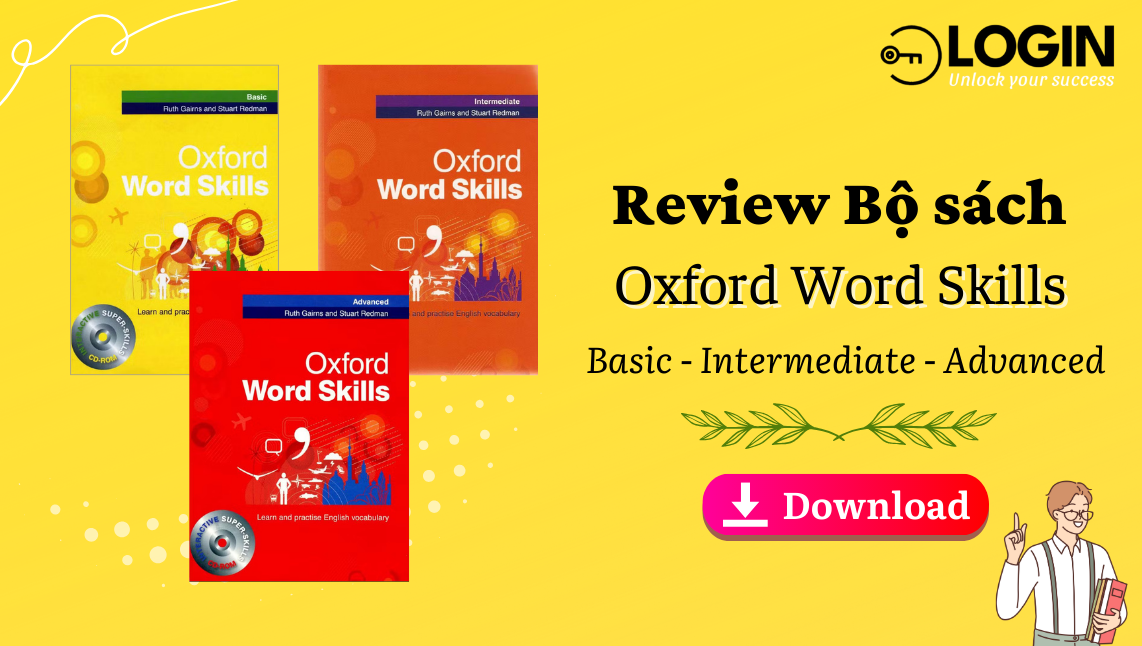Tiếp nối với bài đăng trước của về hướng dẫn giải đề và phân tích chi tiết IELTS Reading Vol 1 Test 1 trong bộ đề thi thật, trong buổi hôm nay IELTS Login sẽ đem đến cho bạn bài luyện tập thứ hai trong bộ đề này. Cùng tìm hiểu và luyện tập ngay nhé !
READING PASSAGE 1
The Clipper Races: an era of competition between cargo ships
A. During the seventeenth and eighteenth centuries, the British East India Company had the monopoly on trade with China and India. This meant that because no rival could legally import tea or other goods from these countries at this time (Q1), the company was rarely in a hurry to transport its merchandise. Instead, its priority was to minimize costs by carrying as much as possible on each ship (Q2). This meant that its ships - known as East Indianmen - were enormous, strong and very slow.
Trong thế kỷ XVII và XVIII, Công ty Đông Ấn Anh độc quyền thương mại với Trung Quốc và Ấn Độ. Điều này có nghĩa là không có đối thủ nào có thể hợp pháp nhập khẩu trà hay hàng hóa khác từ những quốc gia này vào thời điểm đó, nên công ty hiếm khi vội vàng trong việc vận chuyển hàng hóa của mình. Thay vào đó, ưu tiên của họ là giảm thiểu chi phí bằng cách chở càng nhiều hàng càng tốt trên mỗi con tàu. Điều này dẫn đến việc các tàu của họ – được gọi là East Indiamen – có kích thước khổng lồ, chắc chắn nhưng di chuyển rất chậm.
Rival (n): đối thủ
Priority (n): ưu tiên
B. By 1800, the average East Indianman could carry 1,200 tons of merchandise. The trading pattern for China tea usually meant the East indiaman set sail from Britain in January, sailed round the Cape of Good Hope at the southernmost tip of Africa, and arrived in China in September. There they would load up that year's tea harvest, set off again and, depending on the wind and weather, aim to arrive back by the following September. So even with favorable sailing conditions, the round trip lasted almost two years, and if anything went wrong it could take a lot longer (Q3).
Đến năm 1800, một tàu East Indiaman trung bình có thể chở tới 1.200 tấn hàng hóa. Hành trình buôn bán trà từ Trung Quốc thường bắt đầu vào tháng Giêng, khi tàu khởi hành từ Anh, đi vòng qua Mũi Hảo Vọng ở cực nam châu Phi, và đến Trung Quốc vào tháng Chín. Tại đây, họ sẽ chất lên tàu lô trà thu hoạch trong năm đó, rồi khởi hành quay về Anh, với hy vọng cập bến vào tháng Chín năm sau, tùy thuộc vào thời tiết và gió. Vì vậy, ngay cả trong điều kiện thuận lợi, chuyến đi khứ hồi cũng kéo dài gần hai năm, và nếu có sự cố xảy ra, thời gian có thể còn lâu hơn.
Favorable (adj): thuận lợi
C. However, by 1834 the company had lost its trading monopolies, and tea had become a freely traded item. Having no more use for its great ships, the company sold them off, and many were bought by merchants or their captains, who continued to plough the seas between Britain and China (Q5). But now that tea could be traded freely, a few smart sailors began to realize that whoever brought each new harvest of tea to Britain first, stood to make the most money.
Tuy nhiên, đến năm 1834, công ty đã mất quyền độc quyền thương mại và trà trở thành một mặt hàng tự do buôn bán. Không còn cần đến những con tàu khổng lồ, công ty đã bán chúng đi, và nhiều tàu được các thương nhân hoặc thuyền trưởng mua lại để tiếp tục vận chuyển hàng hóa giữa Anh và Trung Quốc. Nhưng giờ đây, khi trà có thể được buôn bán tự do, một số thủy thủ thông minh nhận ra rằng ai mang lô trà mới về Anh đầu tiên sẽ thu được lợi nhuận cao nhất.
D. This was partly because if you were home first, you could sell your shipment of tea before your competitors even arrived, and partly because consumers in Britain in the nineteenth century believed that the fresher and earlier-picked the tea, the better the resulting drink (Q6). Tea traders now needed faster, sleeker ships to bring their precious cargo back. Nevertheless, in Britain this idea only caught on slowly, and while the 1840s saw a few faster ships launched, for the time being many merchants remained satisfied with the slow but reliable East Indiamen.
Điều này một phần là do ai về đến nơi trước sẽ bán được trà trước khi đối thủ cập bến, và một phần vì người tiêu dùng Anh thế kỷ XIX tin rằng trà hái sớm và tươi hơn sẽ cho hương vị ngon hơn. Các thương nhân trà giờ đây cần những con tàu nhanh hơn, thanh thoát hơn để vận chuyển hàng hóa quý giá của mình. Tuy nhiên, tại Anh, ý tưởng này chỉ được chấp nhận một cách chậm chạp. Dù trong những năm 1840 có một số tàu nhanh hơn được chế tạo, nhiều thương nhân vẫn hài lòng với những con tàu East Indiamen chậm nhưng đáng tin cậy.
Sleek (adj): thanh thoát / trơn tru
E. In fact it was the Americans who pioneered the first clipper ships. These vessels were fast and slender, with a narrow hull that was deeper at the back than at the front and masses of sails on tall masts (Q7). They earned their name from the way that they clipped journey times. British merchants resolved to build their own clippers to rival the Americans and the first British tea clipper, Stornaway, was built in Aberdeen in 1850. More tea clippers were designed and built in Britain throughout the 1850s and 1860s, they had a narrower beam than their American equivalents, making them less powerful during storms, but faster in calmer weather (Q8).
Trên thực tế, người Mỹ mới là những người tiên phong trong việc phát triển tàu clipper đầu tiên. Những con tàu này có thiết kế thon dài và tốc độ cao, với thân tàu hẹp, phần sau sâu hơn phần trước, cùng với hệ thống cánh buồm lớn trên những cột buồm cao. Chúng được đặt tên là "clipper" vì khả năng cắt giảm đáng kể thời gian hành trình. Các thương nhân Anh quyết tâm xây dựng tàu clipper của riêng mình để cạnh tranh với người Mỹ, và chiếc tàu clipper chở trà đầu tiên của Anh, Stornaway, được đóng tại Aberdeen vào năm 1850. Trong suốt những năm 1850 và 1860, ngày càng nhiều tàu clipper được thiết kế và chế tạo ở Anh. Chúng có thân tàu hẹp hơn so với tàu Mỹ, khiến chúng kém ổn định hơn trong giông bão, nhưng lại nhanh hơn khi biển lặng.
Pioneer (n/v): người tiên phong/ tiên phong, mở đường
Equivalent (adj/n): tương đương
F. There was a great spirit of competition between the British and American ships plying the tea trade, but to begin with the Americans had the edge. Then, in 1851, a British shipowner, Richard Green, built the aptly named clipper Challenger, with the stated intention of beating the American ships. Loaded with tea, Challenger left China for London in 1852 at the same time as the American clipper Challenge, a much larger, older ship, already greatly admired for its speed. Large sums were bet on which would complete the journey first. In the event, the British ship beat its rival to London by two days (Q9), amid much jubilation. From then on, such international races grew in popularity.
Đã có một tinh thần cạnh tranh mạnh mẽ giữa các tàu Anh và Mỹ trên tuyến thương mại trà, và ban đầu, người Mỹ có lợi thế. Tuy nhiên, vào năm 1851, một chủ tàu người Anh, Richard Green, đã đóng con tàu clipper Challenger với mục tiêu đánh bại các tàu Mỹ. Vào năm 1852, Challenger rời Trung Quốc đi London cùng lúc với tàu clipper Mỹ Challenge, một con tàu lớn hơn và được ngưỡng mộ vì tốc độ. Những khoản tiền cược lớn được đặt vào việc con tàu nào sẽ cập bến trước. Cuối cùng, tàu Anh đã đánh bại đối thủ Mỹ với khoảng cách hai ngày, trong sự vui mừng của giới thương nhân Anh. Từ đó, những cuộc đua quốc tế ngày càng trở nên phổ biến.
Have the edge (idiom): có lợi thế
A bet on (v phr): đặt cược vào/ tin tưởng vào điều gì
Amid (pre): giữa, trong bối cảnh
Jubilation (n): sự hân hoan, vui mừng tột độ
G. After 1855, American participation in the British tea trade gradually stopped. But even without the Anglo-American rivalry, the competitive spirit continued. It was really ignited when new ports were opened up for trade in China (Q10). These included Fouchow, which was much closer to the tea-producing areas than Canton, the port used previously. As a result, tea could be loaded on board earlier and fresher, and the clippers could set off in late May or early June - sometimes not even taking time to fill out the official paperwork - racing back to Britain whatever the difficulties. (Q11)
Sau năm 1855, sự tham gia của Mỹ vào thương mại trà với Anh dần dần chấm dứt. Nhưng ngay cả khi không còn sự cạnh tranh Anh-Mỹ, tinh thần thi đua vẫn tiếp tục. Điều này càng bùng nổ khi các cảng mới tại Trung Quốc được mở cửa cho thương mại. Trong số đó có Fouchow, gần hơn nhiều so với Canton, cảng được sử dụng trước đây. Điều này có nghĩa là trà có thể được chất lên tàu sớm hơn và tươi hơn, giúp các tàu clipper có thể xuất phát từ cuối tháng Năm hoặc đầu tháng Sáu – đôi khi thậm chí không kịp hoàn tất thủ tục giấy tờ – để tranh đua về Anh bất chấp mọi khó khăn.
Ignite (v): đốt cháy / khơi dậy, kích thích
Load (v/n): chất hàng, tải lên / tải trọng, khối lượng hàng hóa
H. They sped down through the South China Sea and into the Indian Ocean, then raced to get round the southernmost tip of Africa at the Cape of Good Hope. From there, they headed north across the vast Atlantic, past the Azores, through the English Channel and into the estuary of the River Thames. Once there, they would be towed by tugs up the river and into the docks. (Q12)
Các tàu clipper lao nhanh qua Biển Đông vào Ấn Độ Dương, sau đó chạy đua vòng qua Mũi Hảo Vọng ở cực nam châu Phi. Tiếp theo, chúng tiến về phía bắc qua Đại Tây Dương, vượt qua quần đảo Azores, rồi qua eo biển Anh vào cửa sông Thames. Khi đến nơi, chúng sẽ được các tàu kéo dắt vào bến cảng.
Tow (v): kéo, dắt
Tug (n/v): tàu kéo / kéo mạnh
Dock (n/v): bến cảng / cập bến
I. The cargo of the winning ship could earn a premium of up to sixpence per pound-and so the captain and crew were rewarded by the owners of the cargo. But the races were about more than just money. The crews, about 40 men on each clipper, were expert sailors, proud of their ships, and they delighted in competing against each other (Q13). Without their enthusiasm, the races would never have happened, since getting the ship home as fast as possible required the crew to be totally dedicated and to sacrifice much of their rest for the duration of the race.
Hàng hóa của con tàu thắng cuộc có thể đạt giá cao hơn tới sáu xu mỗi pound trà – và vì vậy, thuyền trưởng cùng thủy thủ đoàn sẽ được chủ hàng thưởng hậu hĩnh. Nhưng các cuộc đua không chỉ là vì tiền. Các thủy thủ, khoảng 40 người trên mỗi tàu, đều là những người dày dạn kinh nghiệm, tự hào về con tàu của mình và thích thú khi được so tài. Nếu không có lòng nhiệt huyết của họ, những cuộc đua sẽ không thể diễn ra, bởi để đưa tàu về đích nhanh nhất, thủy thủ đoàn phải cống hiến hết mình và hy sinh nhiều thời gian nghỉ ngơi trong suốt hành trình.
Cargo (n): hàng hóa
Compete against (v phr): cạnh tranh, thi đấu với
Dedicate (v): cống hiến
Sacrifice (n/v): hy sinh
Questions 1 - 6
Do the following statements agree with the information given in Reading Passage 1?
In boxes 1-6 on your answer sheet, write
TRUE if the statement agrees with the information
FALSE if the statement contradicts the information
NOT GIVEN if there is no information on this
1. In the seventeenth and eighteenth centuries, the British East India Company faced a lot of competition.
2. Before 1800, cargo size was the most important consideration for the East India Company.
3. At best, voyages of the East indiaman to China and back took nearly two years to complete.
4. Before 1834, voyages to and from China were considered to be highly dangerous.
5. After 1834, the ships which had served the East India Company stopped being used for commercial purposes.
6. In the nineteenth century, British drinkers preferred tea made from mature leaves to that made from younger leaves.
Questions 7 - 13
Complete the notes below.
Choose ONE WORD ONLY from the passage for each answer.
Write your answers in boxes 7-13 on your answer sheet.
Clipper races
The ships
Clipper ships were first used for trading by American merchants. The ships were remarkable for the number of 7 .......................... they had. The performance of British tea clippers was particularly affected when there were 8 ……………….................. at sea.
The races
It was in a ship called 9........................ that the British first competed successfully against the Americans.
Richard Green's ship arrived two days ahead of its competitor.
Competition increased when additional Chinese trading 10............................ were established.
Merchants were occasionally in such a hurry that they failed to complete the 11 ........................ before leaving China.
At the end of their journey, the ships needed the help of 12 .....................
The rewards
The crews were motivated by both 13............................... and their enthusiasm for the competition.
PHÂN TÍCH ĐÁP ÁN
Questions 1-6
1. In the seventeenth and eighteenth centuries, the British East India Company faced a lot of competition.
Keywords: seventeenth and eighteenth / British East India Company.
Thông tin nằm ở: đoạn A “During the seventeenth and eighteenth centuries, the British East India Company had the monopoly on trade with China and India”
Paraphrasing:
| Từ vựng trong câu hỏi | Từ vựng trong bài đọc |
| faced a lot of competition | >< had the monopoly (độc quyền) |
=> Đáp án: FALSE
2. Before 1800, cargo size was the most important consideration for the East India Company.
Keywords: Before 1800 / East India Company
Thông tin nằm ở: đoạn A “Instead, its priority was to minimize costs by carrying as much as possible on each ship.”
Paraphrasing:
| Từ vựng trong câu hỏi | Từ vựng trong bài đọc |
| cargo size (kích thước hàng hóa) | = carrying as much as possible on each ship (chở càng nhiều càng tốt) |
| the most important consideration (yếu tố quan trọng nhất) | = priority ( ưu tiên hàng đầu) |
=> Đáp án: TRUE
3. At best, voyages of the East indiaman to China and back took nearly two years to complete.
Keywords: voyages of the East indiaman to China
Thông tin nằm ở: Đoạn B “So even with favorable sailing conditions, the round trip lasted almost two years.”
Paraphrasing:
| Từ vựng trong câu hỏi | Từ vựng trong bài đọc |
| at best (trong điều kiện tốt nhất) | = with favorable sailing conditions (trong điều kiện thuận lợi nhất để đi biển) |
| nearly two years to complete (gần 2 năm để hoàn thành) | = lasted almost two years (kéo dài gần 2năm) |
=> Đáp án: TRUE
4. Before 1834, voyages to and from China were considered to be highly dangerous.
Keyword: Before 1834 / voyages to and from China
| Từ vựng trong câu hỏi | Từ vựng trong bài đọc |
| highly dangerous (rất nguy hiểm) | NA |
=> Đáp án: NOT GIVEN
5. After 1834, the ships which had served the East India Company stopped being used for commercial purposes.
Keywords: After 1834 / East India Company
Thông tin nằm ở: Đoạn C “the company sold them off, and many were bought by merchants or their captains, who continued to plough the seas between Britain and China”
Paraphrasing:
| Từ vựng trong câu hỏi | Từ vựng trong bài đọc |
| stopped being used for commercial (ngừng được sử dụng cho mục đích thương mại) | >< continued to plough the seas between Britain and China (vận chuyển hàng hóa giữa Anh và Trung Quốc) |
=> Đáp án: FALSE
6. In the nineteenth century, British drinkers preferred tea made from mature leaves to that made from younger leaves.
Keyword: the nineteenth century / British drinkers.
Thông tin nằm ở: Đoạn D “consumers in Britain in the nineteenth century believed that the fresher and earlier-picked the tea, the better the resulting drink”
Paraphrasing:
| Từ vựng trong câu hỏi | Từ vựng trong bài đọc |
| British drinkers (người uống trà ở Anh) | = consumers in Britain (người tiêu dùng ở Anh) |
| preferred mature leaves to younger leaves (thích lá trà già hơn lá non) | >< the fresher and earlier-picked the tea, the better the resulting drink (trà càng tươi và được hái sớm thì đồ uống càng ngon) |
=> Đáp án: FALSE
Questions 7-13
7. The ships were remarkable for the number of 7 .......................... they had.
Phân tích từ loại – Keyword: Từ cần điền là danh từ.
Keywords: clipper ships.
Thông tin nằm ở: Đoạn E “These vessels were fast and slender, with a narrow hull that was deeper at the back than at the front and masses of sails on tall masts.”
Paraphrasing:
| Từ vựng trong câu hỏi | Từ đồng nghĩa trong bài đọc |
| the number of (số lượng) | = masses of (một lượng lớn) |
=> Đáp án: sails
8. The performance of British tea clippers was particularly affected when there were 8 ……………….................. at sea.
Phân tích từ loại – Keyword: Từ cần điền là một danh từ số nhiều.
Keywords: The performance of British tea clippers
Thông tin nằm ở: Đoạn E: “they had a narrower beam than their American equivalents, making them less powerful during storms, but faster in calmer weather.”
Paraphrasing:
| Từ vựng trong câu hỏi | Từ vựng trong bài đọc |
| affected (ảnh hưởng) | = making them less powerful during storms (khiến chúng kém ổn định hơn trong giông bão) |
=> Đáp án: storms
9. It was in a ship called 9........................ that the British first competed successfully against the Americans.
Phân tích từ loại: Từ cần điền là một danh từ chỉ tên riêng.
Keywords: The races ship’s name.
Thông tin nằm ở: Đoạn F: “In the event, the British ship beat its rival to London by two days, amid much jubilation.”
Paraphrasing:
| Từ vựng trong câu hỏi | Từ vựng trong bài đọc |
| the British first competed successfully against the Americans (người Anh lần đầu thắng người Mỹ) | = In the event, the British ship beat its rival to London by two days (Cuối cùng, tàu Anh đã đánh bại đối thủ Mỹ với khoảng cách hai ngày) |
=> Đáp án: Challenger
10. Competition increased when additional Chinese trading 10............................ were established.
Phân tích từ loại: Từ cần điền là một danh từ số nhiểu.
Keywords: competition
Thông tin nằm ở: Đoạn G “It was really ignited when new ports were opened up for trade in China.”
Paraphrasing:
| Từ vựng trong câu hỏi | Từ vựng trong bài đọc |
| increased (tăng lên) | = ignited (bùng nổ) |
| additional Chinese trading ... (có thêm ... của Trung Quốc cho việc buôn bán) | = new ports for trade in China (các cảng mới tại Trung Quốc cho thương mại) |
| established (thành lập) | = opened up (mở cửa) |
=> Đáp án: ports
11. Merchants were occasionally in such a hurry that they failed to complete the 11 ........................ before leaving China.
Phân tích từ loại: Từ cần điền là một danh từ.
Keyword: Merchants before leaving China.
Thông tin nằm ở: Đoạn G “ the clippers could set off in late May or early June - sometimes not even taking time to fill out the official paperwork.”
Paraphrasing:
| Từ vựng trong câu hỏi | Từ vựng trong bài đọc |
| occasionally (thỉnh thoảng) | = sometimes (thỉnh thoảng) |
| failed to complete (không hoàn thành) | = not even taking time to fill (không có thời gian điền) |
=> Đáp án: paperwork
12. At the end of their journey, the ships needed the help of 12 .....................
Phân tích từ loại: Từ cần điền là một danh từ.
Keyword: at the end of their journey.
Thông tin nằm ở: Đoạn H “Once there, they would be towed by tugs, up the river and into the docks. ”
Paraphrasing:
| Từ vựng trong câu hỏi | Từ vựng trong bài đọcc |
| needed the help of (cần sự giúp đỡ của) | = towed by tugs (được kéo bằng tàu) |
=> Đáp án: tugs
13. The crews were motivated by both 13............................... and their enthusiasm for the competition.
Phân tích từ loại: từ cần điền là một danh từ.
Keywords: rewards / crews
Thông tin nằm ở: Đoạn I “But the races were about more than just money. The crews, about 40 men on each clipper, were expert sailors, proud of their ships, and they delighted in competing against each other”
Paraphrasing:
| Từ vựng trong câu hỏi | Từ vựng trong bài đọc |
| their enthusiasm for the competition (sự nhiệt tình của họ đối với cuộc thi) | = they delighted in competing against each other (thích thú khi được so tài) |
=> Đáp án: money
Trên đây là phần Dịch đề và giải thích đáp án chi tiết của Passage 1 (Actual Test - Vol 1 Test 2), để tìm hiểu chi tiết Passage 2 và 3 của Test 2, các bạn có thể xem và luyện tập qua đường link dưới đây:
Dịch đề và giải thích đáp án chi tiết 3 Passage (Actual Test - Vol 1 Test 2)
Xem thêm:
Dịch đề và phân tích đáp án chi tiết IELTS Reading (Actual Test - Vol 1 Test 1)
_________________
Biên soạn bởi IELTS Login Academic Team
- Bài mẫu IELTS Writing Task 2 - Giải đề thi thật
- Dịch đề và phân tích đáp án chi tiết IELTS Reading (Actual Test - Vol 1 Test 3)
- IELTS Speaking Part 2+3: Describe a thing you cannot live without except a cell phone or computer (Sample Answer)
- Bài mẫu IELTS Writing Task 2 - Giải đề thi thật
- IELTS Speaking Part 1: Feeling Bored (Sample Answer)
- Bài mẫu IELTS Writing Task 2 - Giải đề thi thật (15/03/2025)
- IELTS Speaking Part 2+3: Describe a movie you watched recently (Sample Answer)
- Dịch đề và phân tích đáp án chi tiết IELTS Reading (Actual Test - Vol 1 Test 2)








